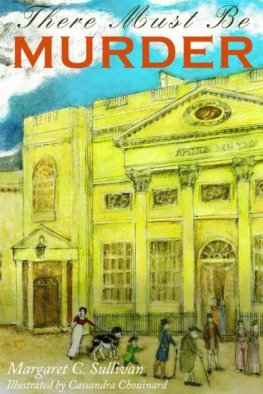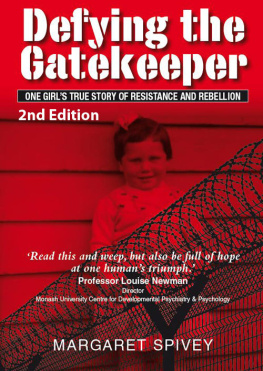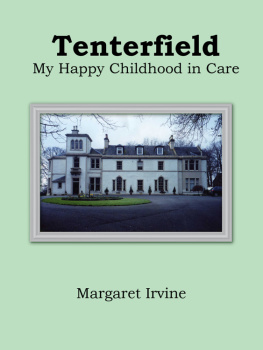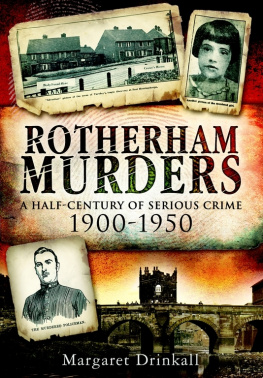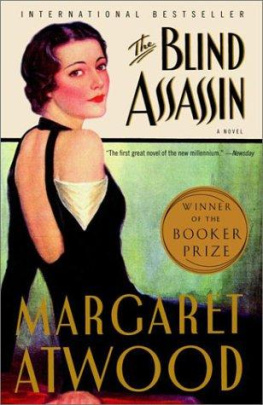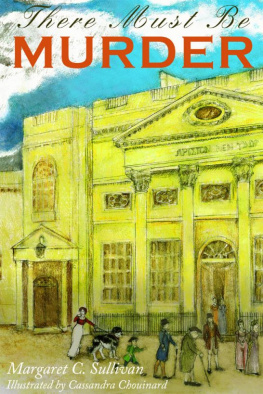Patricia L. Bryan & Thomas Wolf
MIDNIGHT ASSASSIN
A MURDER IN
AMERICAS HEARTLAND

Algonquin Books of Chapel Hill
Published by
Algonquin Books of Chapel Hill
Post Office Box 2225
Chapel Hill, North Carolina 275152225
a division of
Workman Publishing
225 Varick Street
New York, New York 10014
2005 by Patricia L. Bryan and Thomas Wolf. All rights reserved.
Library of Congress Cataloging-in-Publication Data is available for a previous edition of this work.
E-book ISBN 978-1-56512-777-7
Dedicated to
DORIS P. BRYAN
JOHN K. BRYAN
JEANNETTE H. WOLF
And in Memory of
IRVIN S. WOLF
(19142002)
TO THE READER
IN WRITING THIS BOOK, we have been scrupulous in staying true to the historical facts. None of the characters are invented. All of the scenes are based on primary sourcesnewspaper reports, legal records, transcripts of legal proceedings, local histories, interviews, memoirsand we have quoted from these materials throughout the text.
When accounts of specific incidents differed, we presented both versions or the one that seemed most plausible based on the available facts. In quoted passages, we have occasionally made minor changes in spelling, punctuation, or wording for the sake of consistency or readability, which do not affect the original meaning of the text.
To the extent possible, we have tried to keep our authorial perspective in the background. The reader will find information about our sources in the Notes. 
INTRODUCTION
AROUND MIDNIGHT ON A moonlit night in early December 1900, a prosperous and well-respected Iowa farmer named John Hossack was attacked and mortally wounded as he slept in his bed. The assailant struck the victim in the head with either an ax or a hatchet. Hossack lived through the night, partly conscious but unable to speak clearly. He died the next morning, about ten hours after the attack. Hossack was fifty-nine years old.
Hossack and his wife, Margaret, had nine children, including five, ranging in age from thirteen to twenty-six, who were in the house at the time of the assault. Margaret Hossack told investigators that she had been asleep beside her husband when an unidentified intruder struck the fatal blows. But reports soon surfaced that Hossack had abused and threatened his family, and for years his wife had gone to the neighbors to complain of his behavior. Warren County legal authorities quickly decided that Hossacks alleged mistreatment of his family constituted a motive for murder and fixed their attention on the victims wife. Four days after the murder, as she was leaving her husbands burial, Margaret Hossack was arrested and charged with the crime.
In fact, other suspects abounded. Evidence that the family dog had been drugged on the night of the crime suggested premeditation on the part of an outsider. All of the Hossack children had reason to fear and resent their father. Several neighbors had intervened in the family disputes, and at least two of them had discussed the possibility of having Hossack committed to an insane asylum. A neighbor on an adjacent farm had a history of quarrels with Hossack. Rumors hinted at the possibility that Hossack might have had improper relations with another woman. A mysterious horseman was seen riding away from the Hossack property shortly after the attacks.
At the coroners inquest, most of the Hossacks and their neighbors were tight-lipped about their knowledge of the turbulent family history. In 1900, communities largely ignored or tolerated domestic abuse, and no significant public discourse on the issue existed. A code of discreet silence prevailed. Conflict between a man and his family was deemed a private matter, something best forgotten and not spoken about, even under oath. As one witness testified, I do not tax my memory with family quarrels.
Like the Lizzie Borden case in Fall River, Massachusetts, in 1892, the tragedy and subsequent legal proceedings against Margaret Hossack divided, horrified, and mesmerized the community. The family hired William H. Berry, a distinguished lawyer and former state senator, to defend the accused. Berrys adversary was George Clammer, a young and ambitious county attorney, who asked that Margaret Hossack be convicted of first-degree murder and sentenced to death. Overflowing crowds packed the courthouse to watch the legal drama.
Because of the sensational nature of the crime and the prominence of the victim, the murder of John Hossack attracted widespread attention in the press. More than a dozen newspapers, including some from as far away as Chicago, covered the story. One of the first journalists on the scene was Susan Glaspell, a twenty-four-year-old reporter for the Des Moines Daily News. From December 1900 until April 1901, she wrote more than twenty articles on the case. Although Glaspell had little exposure to criminal law, she initially approached the case like a detective; she personally investigated the murder, visiting the Hossack farmhouse, interviewing the attorneys, and studying the inquest testimony. Then her focus shifted to the woman accused of the crime. As Glaspell struggled to understand and describe Margaret Hossack, her accounts alternated between those that portrayed Margaret Hossack as maternal and frailanxious to see her family; tired and worn by the course of eventsand those that depicted her as lacking in the typical emotional and feminine traitsnot hysterical, but emotionless and dry-eyed; not weak, but determined and willful; not soft-featured, but square-jawed and hard.
The case made an indelible impression on Glaspell. More than fifteen years later, writing in a room that faced the ocean on the tip of Cape Cod, the haunting image of Margaret Hossacks kitchen came rushing back to Glaspell. In a span of ten days, Glaspell composed a one-act play, Trifles, the story of an inquiry into the murder of a taciturn and penurious Midwestern farmer, whose wife is charged with killing him in his sleep. A year later, Glaspell reworked the material into a short story titled A Jury of Her Peers. Both works have found a place in the canon of twentieth-century American literature. 
OUR INVESTIGATION BEGAN in a musty storage room in the Madison County courthouse in Winterset, Iowa, the same building where Margaret Hossacks legal trials had officially ended. A clerk showed us a metal drawer with a pink label on it. The only word on the label was HOSSACK. In the drawer, tied in a red ribbon, was a sheaf of brittle papers, yellowed and dried, and more than ninety years old. Included in the bundle were the typed transcript of the coroners inquest into the death of John Hossack and the original handwritten summaries of testimony before the Warren County Grand Jury. In all, there were hundreds of pages of legal documents, including verbatim statements from the witnesses.
That discovery became the backbone of our inquiry. Like Glaspell, at first we thought we might, with patient sleuthing, solve the mystery of who killed John Hossack. We followed the footprints of the story along a crooked trail, searching the archives of county courthouses, visiting libraries and historical societies, reading articles about the case on microfilm, talking to descendants of people who were involved in the case, and interviewing contemporary lawyers and residents of the county. We found local histories, plat maps, probate records, marriage and death certificates. We turned the pages of old newspapers that threatened to crumble to dust on our fingertips.
Next page

![Margaret Millar - The Iron Gates [= Taste of Fears]](/uploads/posts/book/905848/thumbs/margaret-millar-the-iron-gates-taste-of-fears.jpg)
